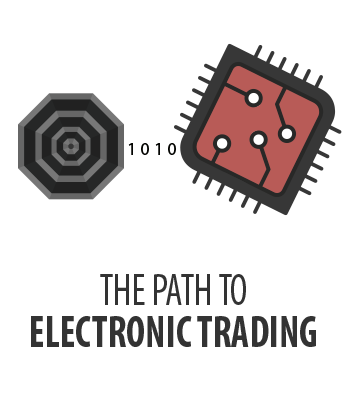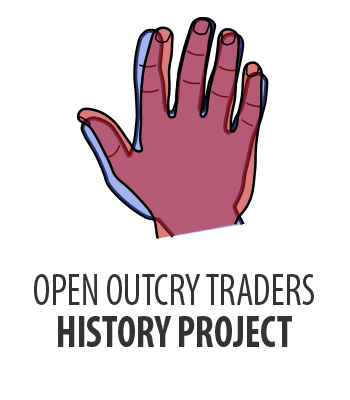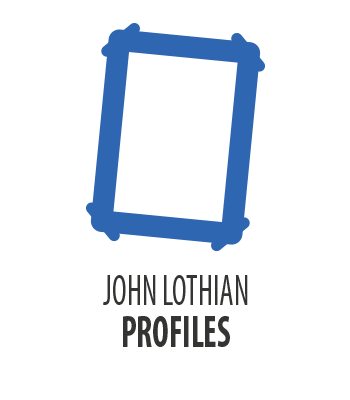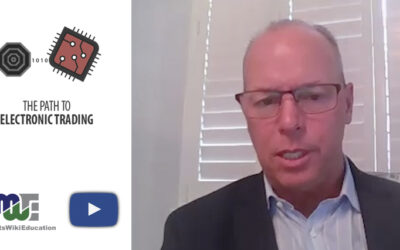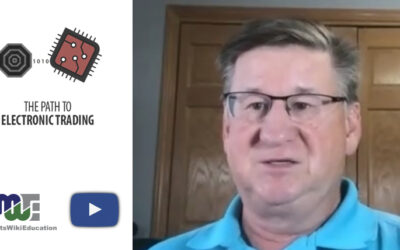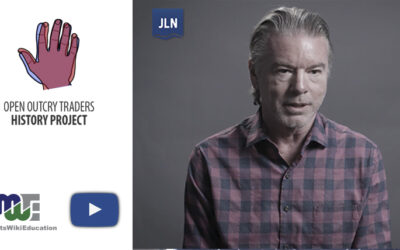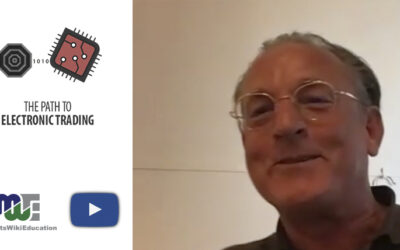ADMIS Executive, Engineer and Problem Solver Talks About Building OAK Trading System
John Walls is an executive with ADM Investor Services, but he started in the industry like many others of his generation as a trading floor messenger or runner. As a runner on the MidAmerica Commodity Exchange trading floor working for Shatkin Trading, Walls took advantage of nearly every opportunity he was presented with to learn all the different aspects of the markets and futures industry.
Walls was an engineer by training who joined Shatkin right after the stock market crash of 1987. Looking at the stock market, he said to himself, “That is a puzzle I would love to try to solve.”
He has worked as a runner, at an off-the-floor desk where he learned about the foreign markets, and on the Chicago Mercantile Exchange trading floor. He checked afternoon out-trades and morning out-trades, became a balancer, and worked the London to MidAm bond arbitrage in the early morning and the MidAm to CBOT bonds later in the day.
Walls decided he would give the markets and trading five years to make it and then he would get a real job. The real job he took in 1992 was as a night computer operator for Iowa Grain. He had an AS 400 mainframe computer at his disposal at work and a lot of time on his hands. With his engineering education, his trading and back office experience, and his interest in technology, he started looking for problems to solve.
The first problem he addressed was the transmission of statements to customers long before there was an internet. It was the world of Western Union and early satellites. Iowa Grain decided to try dial-up, where customers could download the statements from the mainframe computer themselves. It was a big jump in service and reliability and reduction in cost. That success hooked him on using technology to solve problems in the industry.
Using the same technology to pull down statements, he helped Iowa Grain create an on-demand intraday statement on the fly using the data in the computer system during the trading day.
This approach to giving customers information was all about risk management. Walls said Iowa Grain figured they could buy or lease a trading platform to connect to their risk system; however, he was very disappointed to find none of them could give the customer real-time trading data.
The approach Iowa Grain decided on was to build their own order entry system into their technology to take advantage of the real-time data they had. The goal was to get every trade into the system before it was transmitted to the trading pits.
At the same time, the CME and CBOT were coming out with the TOPS order routing system, allowing Iowa Grain to not have to worry about the trading floor portion of the system. But Iowa wanted to be able to capture orders from any trading floor, so they designed the OAK trading system that way. The logo of OAK, Walls said, looks like the design of the system with many branches leading into the single trunk, which represented their risk management engine.
Iowa Grain became a beta tester for much of the CME and CBOT’s new technology as devices like the CUBS terminals at the CME, or the Electronic Clerk terminals at the CBOT were developed. In fact, the CBOT licensed the OAK system from Iowa Grain and offered it as E-Open Outcry to its members in 2000.
At one time there were 56 different FCMs on the OAK System from the E-Open Outcry offering, all for open outcry markets supporting floor access for electronic orders.
With the CME, Iowa Grain licensed OAK to support CME’s FX offering, providing a link between Globex and the cash FX markets.
“Change is a contact sport,” Walls said. Customers, brokers and floor clerks each had their own concerns about adopting the OAK system, with brokers and floor clerks fearing it would take their jobs.
Even the back office was concerned because in the early days the TOPS system had reliability issues. However, Iowa Grain mandated that all orders sent to the trading floor had to go through the OAK system before they were transmitted to a trading pit broker.
Customers responded positively to the OAK system, as they could see their orders go into the system and their fills come out. When they got a call 20 minutes late with their fill, they realized they could cut out the middleman and just use the OAK system.
Volumes on the OAK system grew dramatically, and Walls said they reached 90% of orders on OAK long before they forecasted they would.
Walls also talks about the development of the TOPS system at the CME and CBOT, who were each developing their own separate system, and how later the two exchanges started working collaboratively. Iowa Grain sent the first order into the CBOT TOPS system from an external system, OAK. They were not the first at the CME to route an order from an external system.
This adoption of OAK cut costs for Iowa Grain because risk went down as fewer hands touched an order on its way to the trading pit.
The big breakthrough came when the CME and CBOT deployed the CUBS and Electronic Clerk terminals in their respective trading pits. This eliminated the bottlenecks that occurred when the dot matrix printers used by the TOPS system would spool orders to be printed. With the pit terminals, the new process of orders being entered into Oak directly now eliminated a stop at the trading floor desk and a stop for the runner to deliver the order to a broker or broker’s assistant. The order went directly into the pit and the fill came right back out.
Iowa Grain found itself lucky in the case of the Winnipeg Commodity Exchange. They had written to the exchange to route orders there and then became the only external trading system provider to Winnipeg for several months when the exchange announced it was quickly moving from open outcry to electronic trading.
Walls opines that the way to innovate is by not just improving small parts of the trading process, but taking as much of the whole ecosystem as possible and automating it to achieve the type of growth that comes from such advancement.
